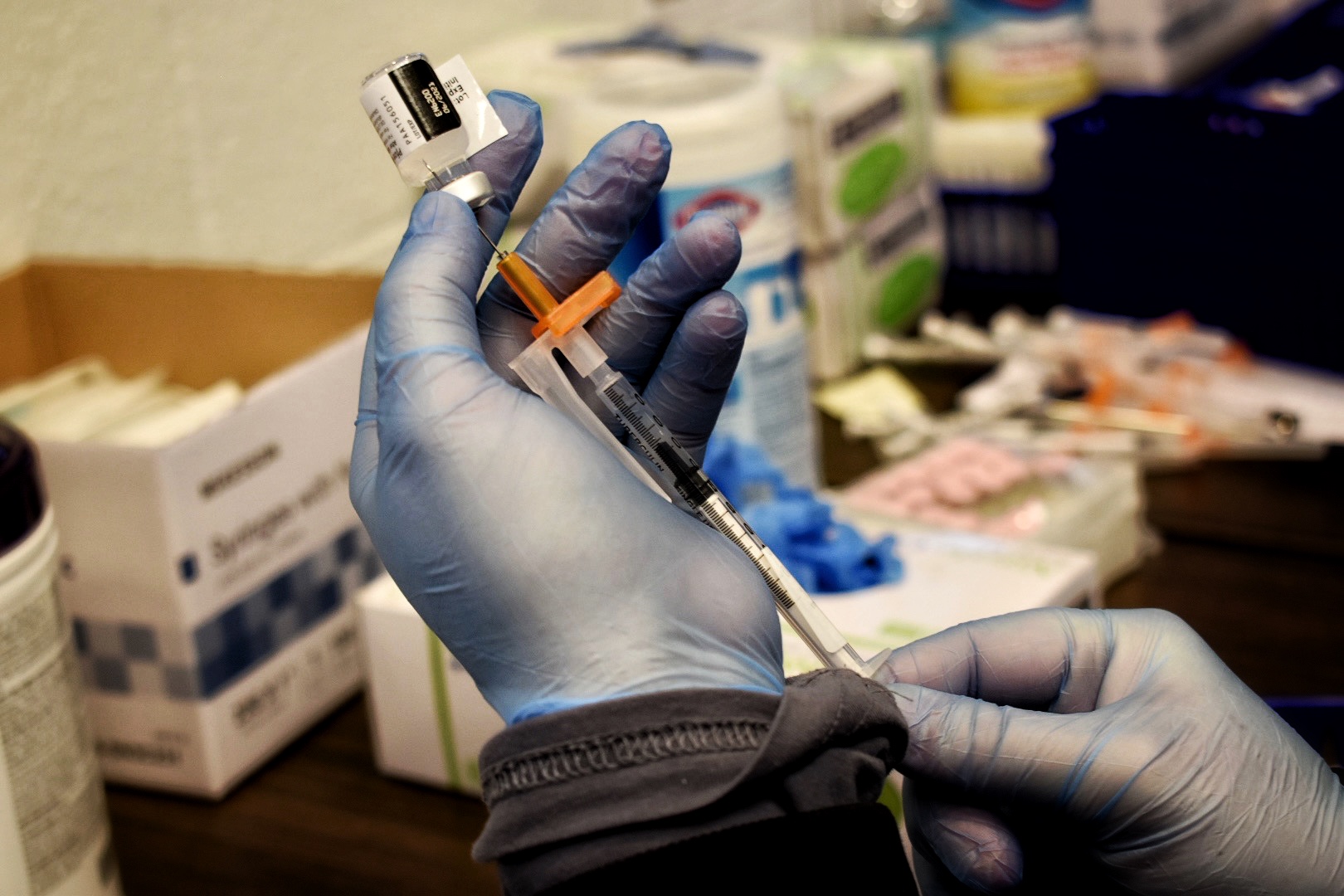
Regina Sung, Contributing Photographer
Now that COVID-19 vaccines are being rolled out for adults in much of the world, pharmaceutical companies have started to conduct further trials to confirm whether the shots are also safe and effective for children and pregnant women.
Although Yale has already enrolled some children between the ages of 12 and 15 in the Pfizer-BioNTech COVID-19 vaccine trials, Audrey Merriam, assistant professor of obstetrics, gynecology and reproductive sciences and specialist in maternal-fetal medicine, will soon be overseeing a new Pfizer-BioNTech vaccine trial for pregnant women. The dates for this new trial have not yet been finalized with the pharmaceutical company, but the study is meant to provide further data to confirm whether the shot is safe for both pregnant women and their babies.
The University and the Yale New Haven Health System will also be recruiting participants between six months and 12 years of age to participate in a new pediatric trial for the Moderna COVID-19 vaccine. Pediatric Infectious Disease Specialist, Epidemiologist and associate professor of pediatrics Inci Yildirim, who will be Yale’s principal investigator for that study, told the News that her team is “hoping to start within the next couple of weeks.”
Yale experts commented on the reasoning behind and implications of these separate trials for children and pregnant women, emphasizing the groups’ physiological differences and the trials’ effects on reaching herd immunity.
Pediatric vaccine trials
As of right now, only individuals 16 and older can receive the Pfizer-BioNTech shot. For the Moderna vaccine, only those 18 and older are eligible. According to Yildirim, there does not seem to be a precise scientific reason why those cutoffs were chosen.
But the fact that vaccine trials in younger people have been delayed until now is due, in part, to how COVID-19 case and fatality rates have mostly been concentrated within the adult population. Because of that, adult vaccinations were the first priority among pharmaceutical companies and vaccinologists.
However, now that vaccines are being rolled out, tests need to be conducted to confirm whether the shots are also safe and effective for children.
“Kids are not tiny adults,” Yildirim said. “A five-year-old can be quite different from a 15-year-old in terms of the dose they need and the immunological response they will have, so you have to pay more attention in terms of the safety and the efficacy and the right dosing when you are working with the pediatric vaccines.”
Professor of immunology and endocrinology Kevan Herold co-led a study in conjunction with the Montefiore Medical Center in New York and researchers from the Albert Einstein College of Medicine that looked at pediatric and adult COVID-19 patients admitted between February and May of last year. The goal was to better understand how children’s immune responses to COVID-19 compared to those seen in adults.
In the study, he and his team found that younger children seem to have higher levels of proinflammatory proteins called cytokines –– specifically interleukin 17A and interferon gamma –– earlier in the course of COVID-19 infection than adults or older children. In addition, those levels seemed to correlate with age, with older children having fewer proinflammatory cytokines.
“Children have this ability to have a very early innate immune response that’s protective against more severe disease,” Herold said.
But despite their apparently enhanced innate immunity against COVID-19, multisystem inflammatory syndrome, or MIS-C –– an illness where many organs, such as the heart, the lungs and the kidneys, can become dangerously inflamed –– has been observed in a large number of children. The same was not found in adults.
According to Yildirim, children who develop MIS-C often end up in the ICU or require invasive procedures to survive.
Although Herold mentioned that not much is known about why pediatric patients develop this condition after they have been infected with COVID-19 while adult patients rarely do, some experts are speculating that it could be due to incomplete clearance of the virus from the body. Incomplete clearance refers to an inability to fully clear the body of the virus even after recovering from initial infection.
But even children who do not evolve to this severe state could still act as viral reservoirs and vectors, posing infection risks for the adults who surround them.
“Children are at less personal risk because of the way they handle the virus,” Herold said. “On the other hand, the children can spread virus, and can shed virus if they’re infected, so I don’t think we can ignore children at all.”
Yildirim estimated that if everything runs smoothly, all children could be eligible for vaccinations between late 2021 and early 2022.
Confirming vaccine safety and efficacy in pregnant women
Although pregnant women are not technically prohibited from getting the COVID-19 vaccines that are currently available, their physiology is markedly different from that of the general population in light of their gestation.
Pregnant women have not been included in many COVID-19 vaccine trials to date. To ensure that the vaccine does not provoke adverse effects for pregnant women or birth defects in their children, additional vaccine testing is required, Merriam explained.
“Based on the type of vaccine it is, and since we know how these vaccines work, we don’t think that there is any way that it could negatively impact a pregnancy or the fetus, we just don’t have the data to say that definitively at this time,” Merriam said.
Merriam told the News that ultimately, results from these further trials will inform obstetricians about whether their pregnant patients should be advised to get vaccinated during or after pregnancy.
Another current unknown is whether immunity to COVID-19 could transfer from the mother to the baby. By looking at the blood in the mother’s umbilical cord after delivery –– which can provide important clues regarding whether or not they are giving COVID-19 antibodies to their babies –– the trial will help elucidate if that passive immunity is also seen in COVID-19.
But an important aspect of this discussion is that pregnancy is a risk factor for severe COVID-19, Merriam pointed out. Thus, even in the absence of vaccine trial data for pregnant women, many pregnant women have chosen to become immunized already.
Importance of preventative measures as vaccines are rolled out
Vaccines are largely viewed as the tool that will bring the world closer to community immunity –– the coveted threshold that can confer the overall population with protection against the virus.
But considering how children comprise over a quarter of the world’s total population, the fact that COVID-19 vaccinations for pediatric age groups may not be available for several additional months may stand in the way of consolidating community immunity.
Having to wait longer for children to be immunized can also compound some of the social challenges encountered by many families throughout the pandemic, Yildirim noted.
“If you think about this and the impact of not being able to go to school and not being able to function as a society due to the pandemic, it is really important to provide protection for our younger ones … so that families and the society can function as normal,” she said. “Schools are the main resource for many families in terms of support for social and intellectual development of the younger ones.”
Yildirim highlighted that because schools were closed early on in the pandemic and children have largely stayed at home over the course of 2020, the role that they play in the dissemination of the disease has remained elusive. It has also made it difficult to assess how essential it is to vaccinate them to reach that important threshold, according to Yildirim.
She did emphasize, however, that even though vaccines are extremely powerful tools, they are not the only ways to reduce the spread of COVID-19.
“We know we need vaccines and we are working on it,” Yildirim said. “But even if you’re vaccinated, and until those vaccines are available for everyone, we could protect others by masking, social distancing and handwashing.”
Both the Pfizer-BioNTech and the Moderna vaccines do not contain any part of the SARS-CoV-2 virus, but instead rely on mRNA technology that stimulates human cells to recognize the coronavirus spike protein.
Maria Fernanda Pacheco | maria.pacheco@yale.edu










